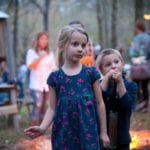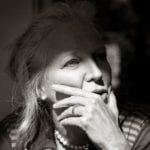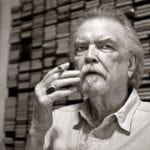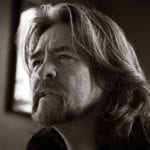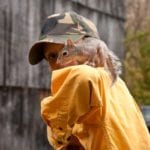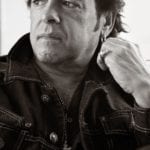November 2012
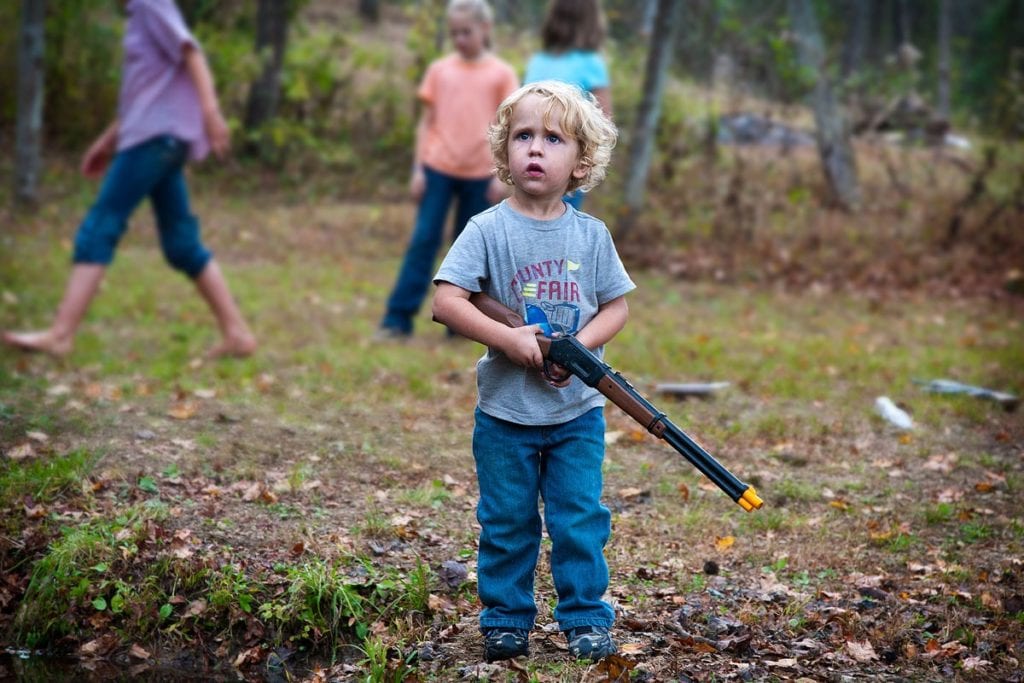
Artist’s Statement
I came back to Nashville, my hometown, in 2010 to work on a book project about songwriters. Since starting this body of work, I have had the pleasure of meeting many unique and talented individuals, including a family trio of songwriters, the Henningsens. They are a father, son, and daughter (there are ten Henningsen kids in all) who have a home in a rural Tennessee hamlet called Primm Springs, around an hour southwest of Nashville. They split time between there and the family farm in Illinois, but are also on the road a lot since they are rapidly on the rise, having penned numerous hits for The Band Perry’s blockbuster debut album and subsequently signing a record deal of their own.
The images Bright Eyed, Trance, and Boy With Gun were made at an event the Henningsens hosted called “Primmstock”, a full day of family, fun, music, and food on their Primm Springs property, where they converted an old tobacco barn into a music venue. Porch is an image of two of the younger Henningsen children made while the book interview was taking place on their Primm Springs front porch. The remaining songwriter portraits of Dave Gibson, Marshall Chapman, Guy Clark, and Diana Jones are selected images from the book in progress.
My chosen approach for these portraits is to photograph them in the process of the interview in order to capture something spontaneous and honest. I try not to direct these subjects so this approach helps to remove me as much as possible from the equation; it allows me to respond to what naturally unfolds before me. Whenever possible I’ve also worked with available light in order to keep the feel of these images as natural as I can. These are not the big name stars and it is my feeling that highly lit studio portraits would be the wrong approach for these subjects. My decision to work on location in the writers’ own environments further contributes to their sense of ease and the honesty of these candid portraits.
I agree with this favorite Richard Avedon quote: “There is no such thing as inaccuracy in a photograph. All photographs are accurate. None of them is the truth.” I don’t see these portraits I’m making as “Truth”, whatever that may mean, but I do think that my approach to this series, in making choices to remove the imposition of my will as best I can from the process of capturing the image, allows some greater degree of the subject’s personality to be accurately expressed. The fact that they are in conversation distracts them from my presence. The imposition of my will on these images comes mostly in the editing process, in the selection and refinement of the chosen photographs. I have also chosen to work in black-and-white for this project instead of color. For me, generally, color is immediate, in the moment. Black-and-white is more quiet, timeless. It removes the distractions of color and allows the viewer to more easily focus on form, composition, and detail, such as the nuance of expression.
Please visit the website ricksmithphotography.com for more information about the ongoing book project as well as samples from Rick’s other bodies of work.
Biography
My photographic journey began when I was a kid and was fascinated with my mom’s Brownie Hawkeye. I wore out a couple of Polaroid cameras in high school, but when I got to college there were only two photo classes offered and no photo major. I got my BFA in studio arts, moved to Dallas, and began a career first as a graphic designer (art directing many photo shoots) and then as an illustrator (and always painting).
My fine art work was mixed media, incorporating more photographic elements as the work evolved (my major early influences were Rauschenberg and Johns, Cornell and Schwitters). I started an MFA program in painting at the University of Dallas in 1999, but shortly thereafter moved to Chicago. Since I was simplifying the mixed media work, I decided to begin a new MFA program in photography because I felt that was the area in which I wanted to concentrate. I started at Columbia College Chicago in 2001, and upon completing that program in 2004, began to teach immediately thereafter. I taught at Columbia from 2004 to 2010, at which point I relocated to Nashville to work on the documentary project The Nashville Songwriter.
Jerry Atnip
Jerry Atnip has a 38-year career as a commercial and fine art photographer. His images have been published in 40 countries, and since 2003, he’s held over 75 exhibitions and been presented with over 90 awards. He is also a teacher, workshop director, curator, juror, frequent lecturer and serves on the boards of several Arts &
Photography organizations, including Atlanta Celebrates Photography festival and Slow Exposures Photofestival. His work has been collected by museums, corporate and private collectors and he is an Exhibiting Member of The National Arts Club in New York.


